How to use the EEF’s RADAAR framework to help you better consider misconceptions when planning your lessons and curriculums
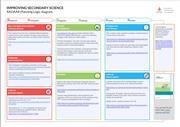
Download this
A RADAAR framework example with RSC resources for approaching atomic structure with your 11–14 students as a pdf.
We are not born knowing everything. Some things we are explicitly taught, and we learn other things through experience. For example, it was obvious to me through childhood experience that the air around me was weightless. In fact, it seemed to make things lose weight: if you blew up a balloon, it felt much lighter. It was also clear to me that candles just got softer when you lit them, but the match you used to light it would disappear and cease to exist once it caught fire.
I now know that none of my naive ideas were scientifically correct. But they are all common misconceptions, and it’s important for us, as teachers, to uncover these misunderstandings so that children develop a view that’s in tune with science. If you view the air around you as a weightless entity, it will make it more difficult to conceive the dynamic system that surrounds you. This will in turn make it trickier to appreciate pertinent scientific ideas such as why ventilation helps prevent the build-up of virus-carrying aerosols in enclosed spaces.
If we’re aware of the common misconceptions for a topic before we teach it, we can take them into account in our planning
What pupils learn depends on what they already know, and so each individual pupil will view what you teach in a slightly different way: this is one of the things that makes teaching such an absorbing and stimulating profession. The analogy or model you use in a lesson might be perfect for one child but mean nothing to the pupil sitting next to them; the new concept you introduce could click for some but not for others, perhaps because they don’t fully understand the foundational ideas or the relevant vocabulary.
Mapping misconceptions
As pupils learn, they build knowledge networks (or schemas) in their long-term memory, making connections with things they already know. The more links they make between the things they learn, the more complex (and useful) these networks become. We need to help pupils assimilate new ideas within their existing schemas, or even to let go of beliefs they currently hold.
Misconceptions develop in a variety of ways, not just from how pupils experience the world around them. They might misunderstand things they’ve learned – for example they might think that atoms in wood are brown and hard. Or we can inadvertently reinforce misconceptions ourselves through the language we use, for example exclaiming that we’ve ‘run out of energy’.
An important aspect of teaching is to make the implicit thought processes of experts explicit. The RADAAR framework aims to do this for planning
If we’re aware of the common misconceptions for a particular topic before we begin to teach it, we can take them into account in our planning. We can think about the language we’ll avoid, the ideas we’ll be careful to emphasise and consider how we might uncover any misconceptions our pupils hold. But we should also keep in mind that trickier concepts can take time to master, so it’s worth planning how we’ll revisit misconceptions from previous lessons and topics, so we can review pupils’ understanding.
Experienced teachers take account of this in their planning. They think about the knowledge and language their pupils need to understand to access a new idea, and they consider what they’re building towards when they plan a particular lesson, and this becomes second nature. What’s more, teachers are experts in their subjects who also understand how their pupils learn. They can view concepts through their eyes, anticipate the hurdles they’ll encounter, draw on a range of ways to help them overcome them and contextualise new ideas. This is what makes them more than simply experts in their subject.
On the RADAAR
The EEF’s RADAAR framework makes these thinking processes explicit. It can be used to help in your personal planning, as a prompt for joint departmental planning, or as a resource for experienced teachers to support more inexperienced colleagues. It supports a three-stage approach to planning around misconceptions:
1. Research and Anticipate
We need to think about likely misconceptions before we enter the classroom. Experienced teachers will often think back to previous times they taught a topic and remember the aspects pupils found most tricky. But everyone can benefit from resources such as Keith Taber’s Chemical misconceptions, which outlines common misconceptions for a range of key ideas in chemistry.
Teachers also learn from their colleagues, sharing ideas about future topics as they chat in the coffee room, for example. Many departments have formalised and structured this kind of process in departmental planning meetings, where colleagues discuss how best to teach upcoming topics.
‘We have used RADAAR as a prompt for collaborative planning’
Helen Slipper, head of science faculty, Bottisham College: We are currently thinking deeply about curriculum: how to sequence it and how to support cohesion between specialisms and subjects. We are also keen to develop ways of supporting our teachers when they’re teaching out of specialism and our early career teachers (or teachers who are new to the school).
We have used the RADAAR framework as a prompt for collaborative planning during departmental meetings. Within their own specialism, teachers found this useful, as it helped them to consider the fundamentals needed for each topic, such as prior knowledge, specialist language, misconceptions and diagnostic questions. Outside of specialism, it stimulated thinking and discussion about curriculum, provided an opportunity for them to learn from subject specialists, and encouraged reflection as they planned a topic.
We’re aiming to produce a curriculum that breaks from the prescriptive lesson content and activities generally found in traditional schemes of work and move towards one that promotes teacher autonomy. We want to help students construct secure science schemas and avoid superficial understanding, so it’s important to us that teachers help them make links within and between topics.
We’ve used the prompt questions in the RADAAR framework to stimulate discussion for each topic and summarise key questions and concepts. We thought about the teaching order, how to assess common misconceptions, build on prior knowledge and build in links to future topics.
We’re planning to produce some exemplar planning guides – our own ‘Bottisham RADAAR frameworks’. Staff will then trial these topic planning guides and collaborate as a faculty to create a full set that we can use to support the department next year.
2. Diagnose and Address
This is the ‘bread and butter’ of teaching. Once you’re with your class, you can uncover the ideas they hold, and help to build on them. This will require some form of diagnostic assessment. It could be as simple as a conversation with a pupil or it could be a hinge question, planned in advance. Both are most effective when they take common misconceptions into account.
The key thing is that diagnostic assessment elicits information you can act on. Sometimes, you might just want to use a refutation text, or you might use a practical activity that forces pupils to confront their assumptions. Best Evidence Science Teaching summarises diagnostic questions and activities for a range of topics.
3. Assess and Review
This stage is easily overlooked, but we need to check (and recheck) that our pupils understand ideas, both in their original topic and within the context of later topics. If we see learning as a process of connecting ideas, rather than simply collecting them, then this has to be a key aspect of our planning. What’s more, even the most studious pupils will often forget things, or will need refamiliarising with key concepts in the future. For example, when I teach precipitation reactions, I will first briefly check that pupils have a good understanding of ions: how they are formed and their characteristics, whether in a lattice or solution.
The RADAAR framework also includes an additional section where you can note down things pupils find difficult as you teach, so you can recheck understanding later. This reinforces the idea that teaching and learning is an iterative process, rather than a one-off activity that ends when the lesson does.
‘I found RADAAR really supported the trainee teacher I am mentoring’
Thandi Banda, faculty lead for science, The Beacon School: Before using the RADAAR framework to support other teachers in my department, I used it myself to plan my own lessons. I tweaked it to make it work for me, for example by making a note of questions I’d ask during lessons. I found it really helped me sequence my lessons, which then helped my students make links between ideas and understand more.
Since then, I’ve used it to support other teachers, including the trainee teacher I am mentoring. I found it really supported them to focus their planning and sequence their ideas. It also helped me give very specific feedback, rather than talking about more general points.
Next, I’m planning to use it across the department to support collaboration between subject specialists and teachers who are teaching out of specialism. They’ll use the RADAAR framework to plan a module together, supporting each other to make links between ideas and sequence it more effectively.
Robert Howell, PGCE student, The Beacon School: The RADAAR framework has helped me think about specific aspects of the curriculum as I plan lessons, such as common misconceptions and how I’ll address them. It’s also prompted me to plan how I’ll check for understanding. For example, I recently taught the quantitative chemistry topic, and I used the framework to consider in advance how I would model some of the trickier processes and then the questions I’d ask afterwards.
I’ve found the section on the framework that prompts me to think about links to future learning particularly helpful, as it enabled me to move on from planning lessons in isolation to thinking about them as part of a bigger picture. It helped me link ideas from an individual lesson to later topics, and show my students how they might apply what they were learning that day in the future.
An important aspect of teaching is to make the implicit thought processes of experts explicit. The RADAAR framework aims to do this for the way experienced teachers plan.
Inspired by Niki Kaiser’s work on misconceptions and lesson planning? Niki’s commitment to using and sharing research-informed teaching approaches won her the Royal Society of Chemistry’s Education Award in 2019. If you know someone who also deserves recognition, nominate them for an Excellence in Education Prize from the Royal Society of Chemistry. Nominations open now.
Downloads
RADAAR_Planning_Atomic Structure Resources
Article | PDF, Size 2.33 mb




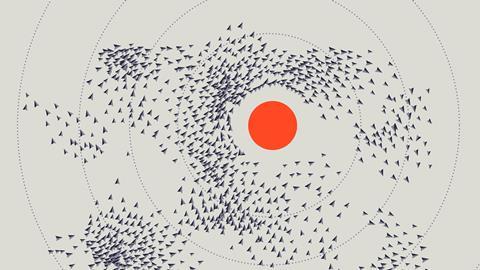

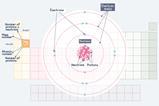
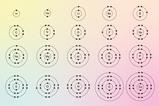
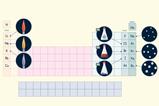






No comments yet